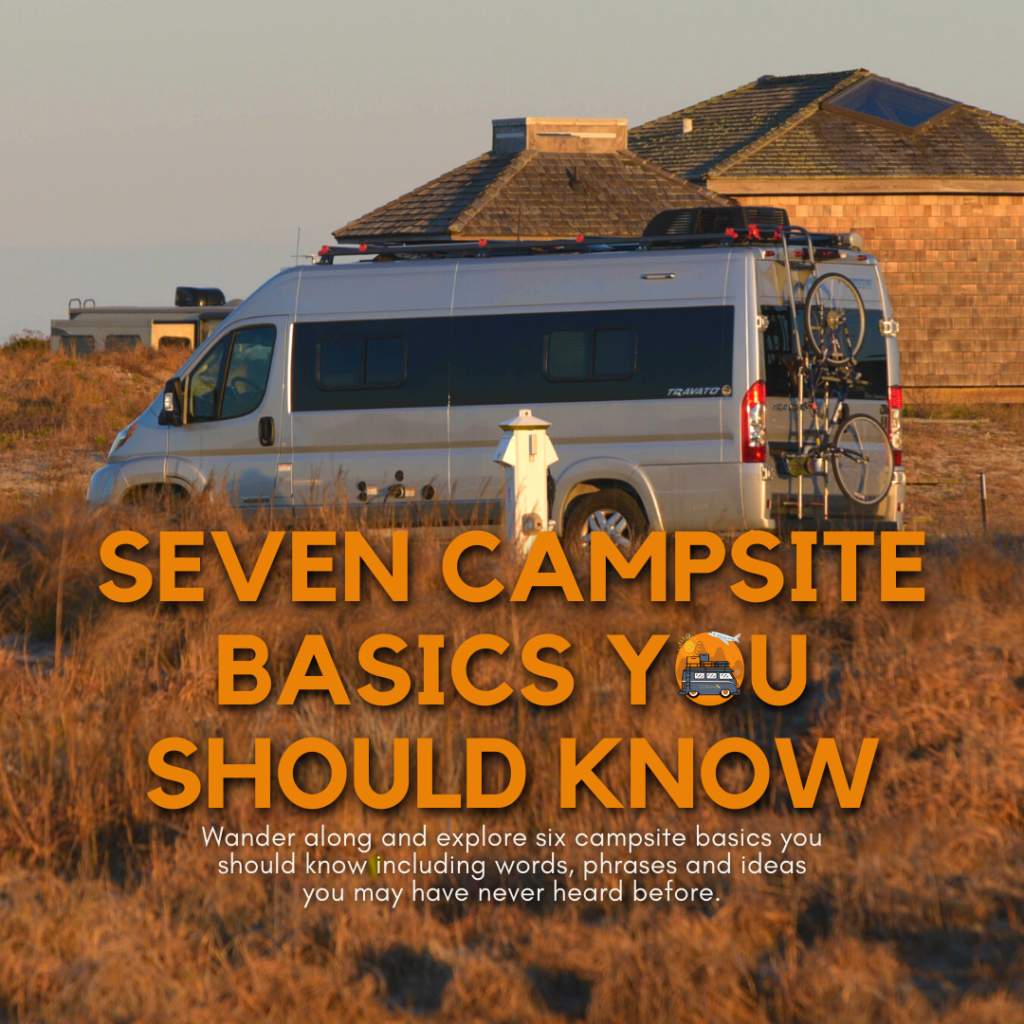Seven Campsite Basics You Should Know
Hi there! I am so glad you are here!
Are you new to camping and need some help getting started? Don’t worry, you’re not alone! Camping is one of the best ways to escape your everyday routine and explore nature. That’s why more than 40 million people go camping each year! But there’s still a lot to know, so let’s get started!
Nothing behind me, everything ahead of me, as is ever so on the road.
Jack Kerouac
Starting a new activity can be a challenging experience, especially if you are unfamiliar with the subject. When it comes to camping, there are many things to consider. For example, the type of campsite you want to stay at and the cost involved.
Table of Contents
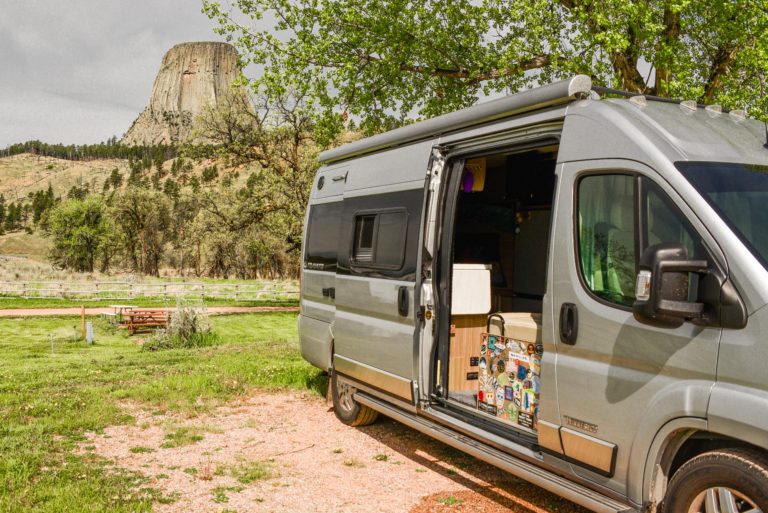
Out Wandering 7 Essential Camping Basics To Know
This post is a guide to campsites in particular. Whether you are looking for a paid or free experience, there are various types of sites you will encounter.
We will discuss seven essential campsite concepts, including terminology and phrases.
Developed Campsites
Developed campsites are designated camping areas. Created specifically for camping, they are filled with various amenities and facilities provided to ensure a comfortable and safe camping experience. These sites are typically found in private campgrounds and state parks and often include features like picnic tables, fire pits, water and electricity.
This type of campsite may also provide amenities like showers, restrooms, and laundry facilities, which make them more suitable for extended camping trips.
In contrast, they are much different from primitive, hike-in or tent campsites. Primitive camping is usually offered in more remote locations within a state park. Depending on the campground, a tent camper will have access to some amenities, like the bathrooms and showers.
Many modern conveniences are found at developed campgrounds. An ideal option for families, groups, and individuals who want to enjoy the great outdoors.
In addition, you may find a variety of other facilities at a developed campground, too. Amenities such as potable water, picnic areas, garbage cans, tent pads, dump stations, group shelters, supply stores and recreation rooms – some of which may be free.
Keep in mind that the more conveniences a campground offers, the higher the nightly campsite charge will be. Although developed campgrounds can provide some of the best campsites around, you will most likely have close neighbors, and they book up quickly. Reservations are recommended.
Out Wandering Note:
Along the way, you might find free-developed campsites. Most of them will only have a fire ring provided. There may be a picnic table nearby and perhaps a pit toilet, but all are first come, first served.
In my experience, this type of campsite is generally a local favorite and is always taken. If you are lucky enough to find one, take it!
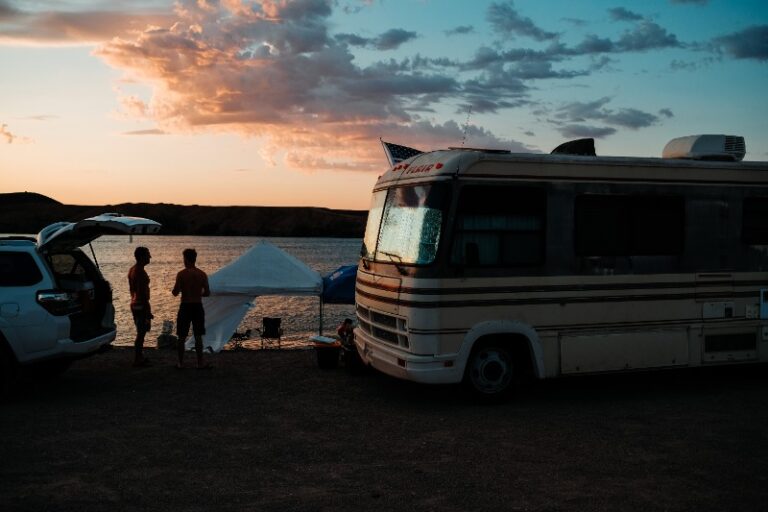
Dispersed Camping
Dispersed camping is available in undeveloped areas like along lake shores and in forests. According to the US Forest Service website, dispersed camping “…is the term used for camping anywhere in the National Forest OUTSIDE of a designated campground.”
A dispersed camping area, typically one situated in the middle of nowhere. You may not see another person for days. Pack in and out all of your needs when camping dispersed too. Although some may offer pit toilets, you are on your own in this type of camping.
Wherever you go, there you are.
Suppose you’re planning a dispersed camping trip. In that case, it is essential to know that this type of camping requires a different set of skills and responsibilities. Before embarking on this new experience, it is necessary to familiarize yourself with the camping rules and regulations to ensure a safe and enjoyable trip.
These rules are in place to protect the natural environment and keep it unspoiled for other campers to enjoy.
The US Forest Service states:
- Vehicles must be self-contained – no amenities are provided, such as water, restrooms or trash cans.
- Camping dispersed is allowed for up to 16 days on each site. After sixteen days, you’ll have to find another location at least 5 miles away.
- Park or set up a tent at least 100 feet from any water source.
- Take everything out with you when leaving.
- Remain bear-aware when in bear country.
- Follow all fire restrictions and bans (very important!)
- And, when going number two outside, it’s required that you dig a hole six inches deep and 100 feet or more away from all water sources, putting toilet paper in the trash.
Out Wandering Note:
Being off the grid.
I love exploring remote areas that are entirely off the grid. These federal lands are owned by the Bureau of Land Management (BLM Land) and are usually located in isolated places.
Before I got my van, I used to wander around in my Toyota 4Runner. I would carry a water tank with me to fulfill my various water needs. Sleeping in secluded places has its own challenges.
Still, it also provides a sense of freedom and peace that you can’t find anywhere else. There have been some breathtaking views and sunsets and sunrises in these areas, too.
One additional note is most of these areas will be without cell service. Although this can be a great thing, some of you may find it very uncomfortable. Maybe even a bit scary.
BLM

An abbreviation that stands for Bureau of Land Management, BLM is public property, free and open for public use.
Basically, BLM’s primary purpose is to conserve and protect resources, recreation (hiking, biking, fishing, climbing, camping) and energy development.
BLM areas have both developed and dispersed camping. Some sites are free to camp, while others ask for a small charge to maintain the area.
Download the Free Roam app. Select the BLM layer and explore what you might find nearby for BLM resources.
Boondocking
RV boondocking is a type of camping that involves setting up camp in a location without any available electricity, water, or sewage hookups.
This type of camping is often done on public lands or parking lots of businesses that allow overnight parking. Unlike campsites, these locations do not offer any services or amenities.
Boondocking is known as wild or free camping.
The main difference between RV boondocking and dispersed camping is that boondocking sites can be found anywhere, not just on BLM land. The best part of RV boondocking is that these types of sites are free campsites.
Also known as wild or free camping, boondocking can take many forms. You can do it by setting up camp on a secluded piece of national forest land, for example. Other ways include spending a night or two in a Walmart or Casino parking lot or staying on a friend’s driveway or in front of their house on the street.
Each situation is unique, but they all require campers to be totally self-sufficient when it comes to water, bathroom, and power.
In return, the reward is an adventure and a sense of freedom that cannot be found in traditional campsites.
Out Wandering Note:
For me, boondocking is the best for when you need a safe place to stay for a night or two. Boondocking reduces my expenses on travel days and is also very convenient because only a little effort is needed to find one.
Dry Camping
Dry camping is a term that means you are not using any water hookup or have water in the holding tanks but onboard water in smaller containers.
Moreover, you aren’t using the toilet system in your rig. The exception is a self-contained porta-potty of some kind. During this type of camping, you are in places where water hoses might freeze, or traditional dumping stations are not accessible or closed.
Out Wandering Note:
During the winter months, I dry camp exclusively while traveling in the Midwest. Using a porta-potty placed on my bathroom floor. However, I do find disposing of waste a challenge. I have gotten quite creative to ensure its disposal is done in a legal and environmentally friendly manner while out exploring.
One helpful option is to find pit toilets in State or County Parks. Most of them remain open throughout the year, and I feel good about doing this if I have purchased an entrance sticker.
I am asked all of the time, “But where do you go?”
In most towns and cities, there are wastewater sewage plants that you can use to dispose of waste (depending on snow removal, of course).
If you’re really stuck, you can always head to Camping World or a truck stop and use their dump facilities. And when all else fails, I’ve had to ask my mom if I can use her bathroom. Thanks, Mom!
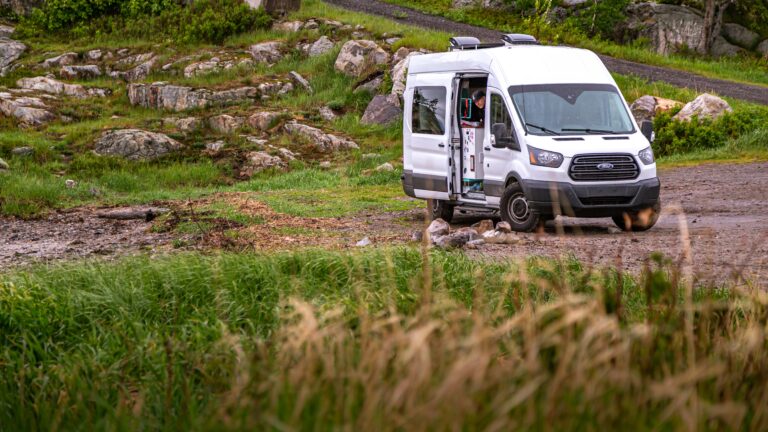
Stealth Camping
Stealth camping is used in the campervan community and refers to parking somewhere overnight with nobody inside the vehicle.
Nowadays, most converted campervans are far from being stealthy. With the addition of solar panels, shore power inlets, curtains, and even extra storage or other equipment visible on the outside, they are a far cry from an empty cargo shell.
I must be gone before daylight comes.
The point of stealth camping is to stay overnight unnoticed in areas where it’s legal, though maybe not encouraged.
Great places to stealth camp are along city streets, in a neighborhood, or in business parking lots at hospitals, gas stations, or malls.
Other camping sites that can feel a bit stealthy are on private land or even those found through the Harvest Hosts app.
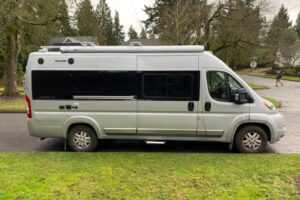
Out Wandering Note:
Some rest areas along interstates allow overnight parking. Still, if it’s posted “No Overnight Parking,” you will more than likely get a knock on your window during your sleep asking you to leave. Or, worse yet, wake up to your rig being towed.
In a way, stealth camping is like being ‘on the run.’ Have some fun and read my blog post, 10 Tips To Stealth Camping, to learn more.
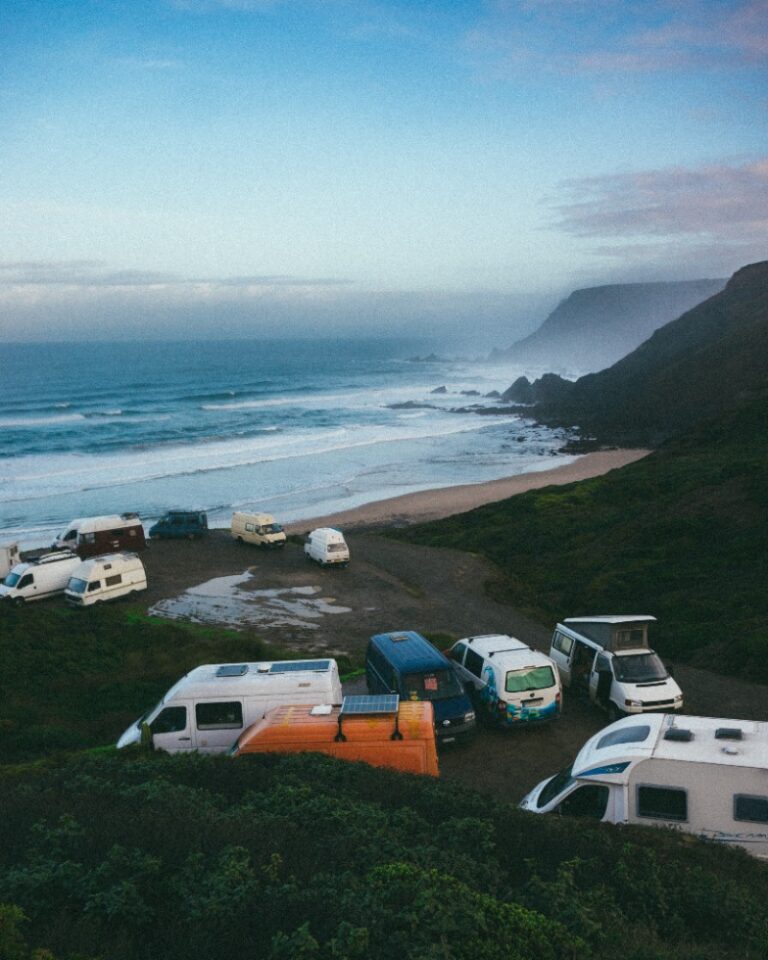
Self-Contained Camping
If you’re someone who loves traveling and exploring the country, then being self-contained can be a game-changer for you. This kind of camping means that you have everything you need right in your vehicle.
Without needing to rely on external facilities, you can travel more freely and with more confidence. Knowing that you have all the essentials you need onboard makes boondocking more accessible, too.
When you have a self-contained vehicle, you have access to a range of facilities that make your trip more comfortable and secure. For instance, you may have a toilet, refrigerator, stove, greywater container, and/or a heating system. Each of them has been specifically designed to make your journey more enjoyable and stress-free.
No matter if you’re on a long road trip or a short weekend getaway, traveling self-contained gives you peace of mind. You will rest assured knowing you have everything you need to make your trip comfortable.
Self-contained travel is the best way to travel!
Furthermore, being self-contained also gives you access to power on the go. Traveling this way, you can rely on something other than external power sources to keep your lights on or to maintain your onboard electrical needs.
With a self-contained vehicle, you can power up your coach battery or use an off-grid solar panel system to keep your electrical devices running smoothly.
As a result, you will explore the great outdoors without worrying about losing power or being stranded in the middle of nowhere.
Leave No Trace
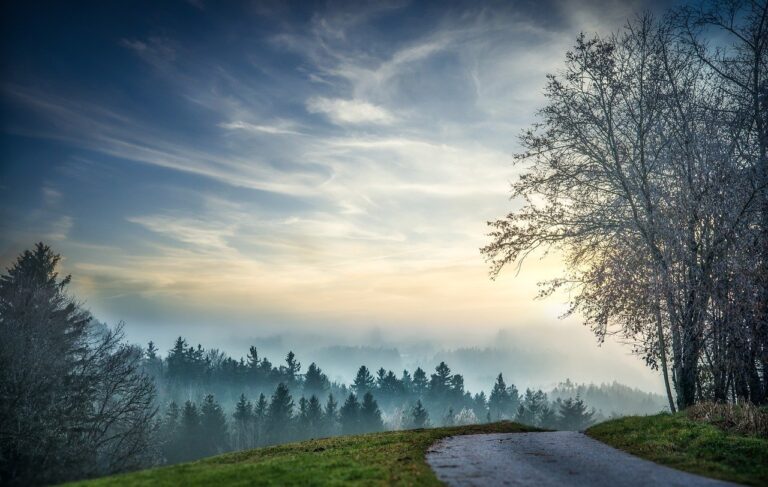
In order to preserve our natural environment, we all must do our part. One way to achieve this is by adopting the “Leave No Trace” principle while camping. In other words, it is all about ensuring that the land remains in the same or even better condition than the way you found it.
To follow this principle, it is essential to prepare for your camping trip and plan ahead. Essentially, this means carrying all necessary equipment and supplies so that there is no need to disturb the surrounding environment. In addition, it’s advisable to camp on durable surfaces that are less likely to be damaged by your presence.
We all need to do our part when it comes to preserving our environment.
Proper waste disposal is another critical element of “Leave No Trace.” Any waste must be disposed of responsibly so that it does not harm the environment or wildlife. While exploring, it is important to leave things as you find them so that you do not disturb the natural balance of the surrounding area.
Campfires can also have a significant impact on the environment. In order to minimize the impact of campfires, it is best to use fire rings or fire pans in areas where they are allowed.
Protecting and preserving animals is our duty as custodians of this planet.
Last but not least, conserving the natural environment requires care for wildlife and consideration for others.
The preservation of our natural environment is a responsibility that we all share, and it entails more than just reducing our waste and carbon footprint. We must also be mindful of the wildlife that inhabits these ecosystems and the people who live and work alongside them.
By showing compassion and consideration for both, we can ensure that these precious habitats remain intact for generations to come.
Essential Items
I am a minimalist and only carry a few extras in my van. Using the 20/20 rule, if I can buy it for less than $20 somewhere within 20 minutes, I don’t have it in my rig.
However, the following list are some of the items I have deemed completely necessary to have onboard.
- A sleeping bag – because I never know when sleeping out under the stars will be a “must-do.”
- A first-aid kit
- An extra water bottle – always pack enough water for hikes.
- Duct tape – For “MacGyver moments” and also makes a great bandaid if the first-aid kit is out.
- Shower shoes – Because athlete’s foot is a real thing!
Go Out Wandering
Suppose you’re planning a camping trip anywhere in North America. In that case, you’ll want to have the relevant information before you start. Your overall camping experience and a good night’s sleep will be better if you have insight into what may happen. No matter if it’s your first time or you are a frequent camper, it’s a good idea to consider each camping lifestyle.
There are so many tools and some of the best camping apps to help you find free camping spots and plan those long drives and road trips. These apps can help you discover hidden gems and off-the-beaten-path locations that you might not have known about otherwise.
No matter how you choose to go camping in the great outdoors, I wish you a memorable and happy adventure!
Out Wandering Note:
Popular camping apps can be a great way to help you find a site in public campgrounds. Many offer a free version and provide more information on camp spots in RV parks, national parks, national forests, or even on public lands across the United States.
Travel apps like Google Maps are also available to help your road trip to where you want to go.
Find out more from this post: 14 CAMPING APPS TO HELP YOU FIND YOUR WAY.
Share this post

Kirsti Out Wandering aspires to illustrate well-being in mind, body & spirit, giving unconditional love to self and others, and pursuing all of the wild possibilities life serves up while living full-time from a sprinter van.
Follow along! Be sure to sign up for my monthly newsletter filled with stories and tips on travel, exploring, van-living, self-care & yoga, photography and life on the road.

